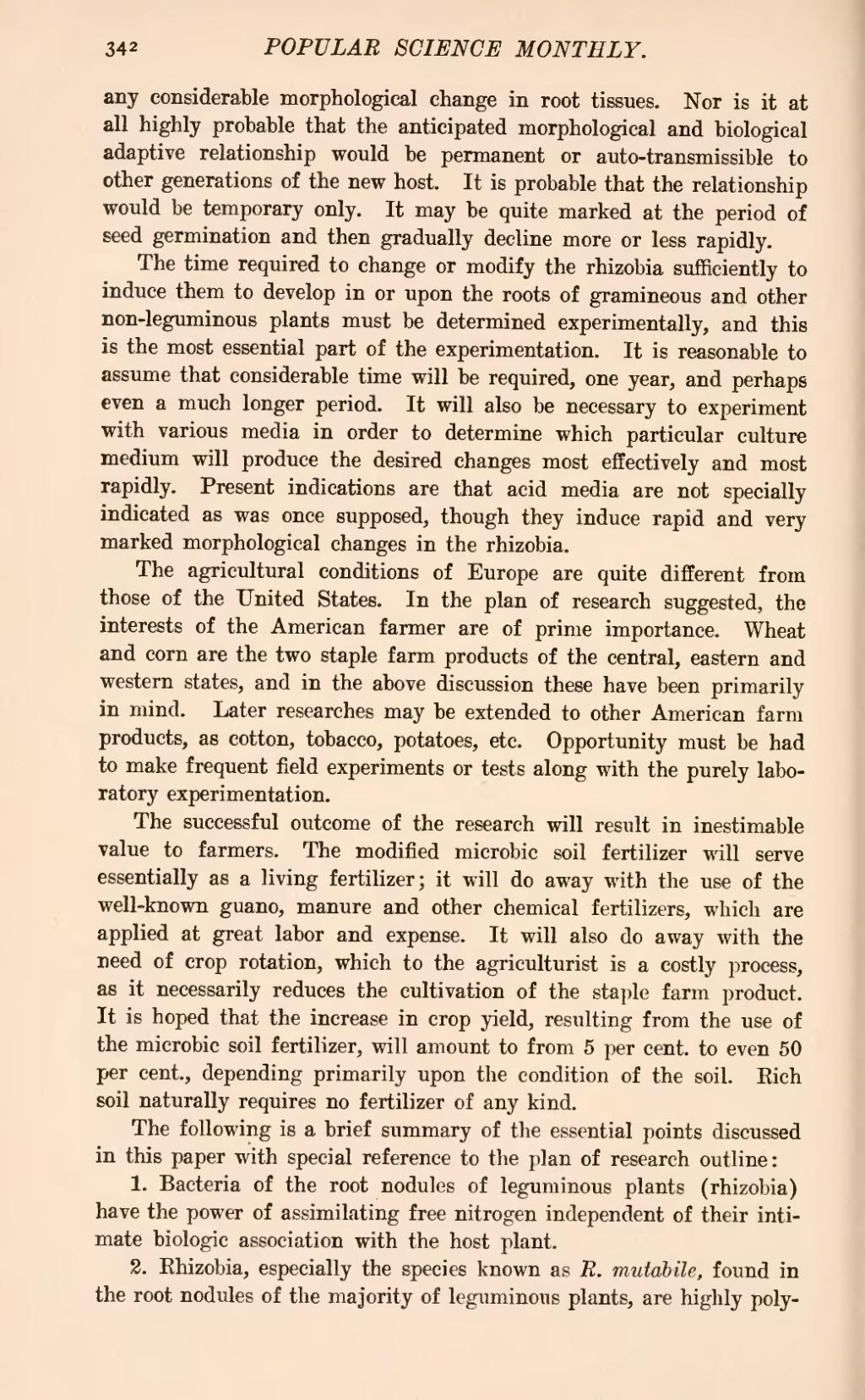any considerable morphological change in root tissues. Nor is it at all highly probable that the anticipated morphological and biological adaptive relationship would be permanent or auto-transmissible to other generations of the new host. It is probable that the relationship would be temporary only. It may be quite marked at the period of seed germination and then gradually decline more or less rapidly.
The time required to change or modify the rhizobia sufficiently to induce them to develop in or upon the roots of gramineous and other non-leguminous plants must be determined experimentally, and this is the most essential part of the experimentation. It is reasonable to assume that considerable time will be required, one year, and perhaps even a much longer period. It will also be necessary to experiment with various media in order to determine which particular culture medium will produce the desired changes most effectively and most rapidly. Present indications are that acid media are not specially indicated as was once supposed, though they induce rapid and very marked morphological changes in the rhizobia.
The agricultural conditions of Europe are quite different from those of the United States. In the plan of research suggested, the interests of the American farmer are of prime importance. Wheat and corn are the two staple farm products of the central, eastern and western states, and in the above discussion these have been primarily in mind. Later researches may be extended to other American farm products, as cotton, tobacco, potatoes, etc. Opportunity must be had to make frequent field experiments or tests along with the purely laboratory experimentation.
The successful outcome of the research will result in inestimable value to farmers. The modified microbic soil fertilizer will serve essentially as a living fertilizer; it will do away with the use of the well-known guano, manure and other chemical fertilizers, which are applied at great labor and expense. It will also do away with the need of crop rotation, which to the agriculturist is a costly process, as it necessarily reduces the cultivation of the staple farm product. It is hoped that the increase in crop yield, resulting from the use of the microbic soil fertilizer, will amount to from 5 per cent, to even 50 per cent., depending primarily upon the condition of the soil. Rich soil naturally requires no fertilizer of any kind.
The following is a brief summary of the essential points discussed in this paper with special reference to the plan of research outline:
1. Bacteria of the root nodules of leguminous plants (rhizobia) have the power of assimilating free nitrogen independent of their intimate biologic association with the host plant.
2. Rhizobia, especially the species known as R. mutabile, found in the root nodules of the majority of leguminous plants, are highly poly-
